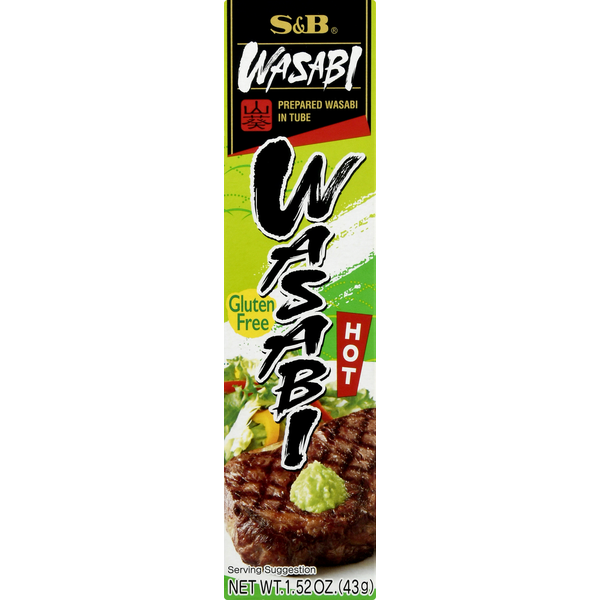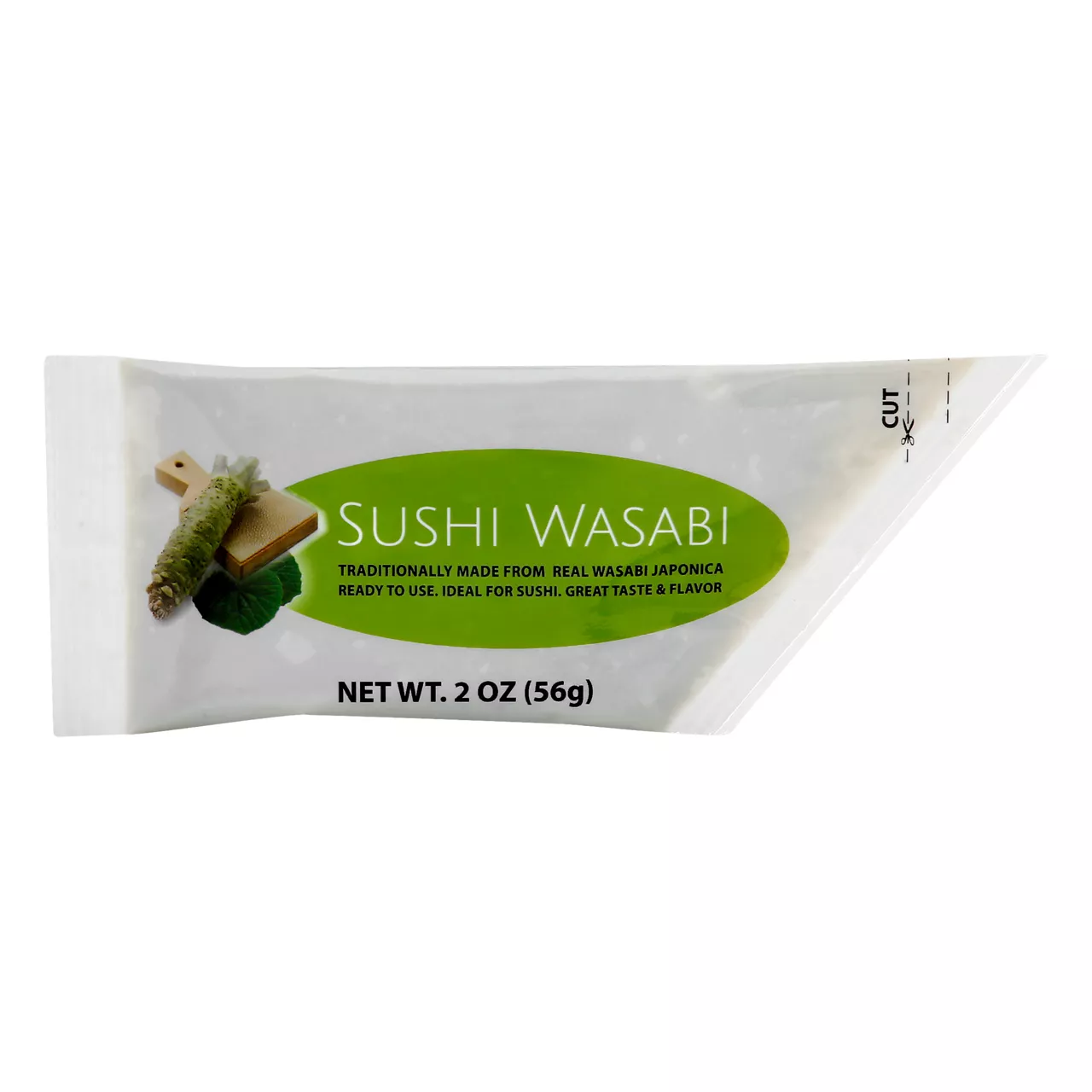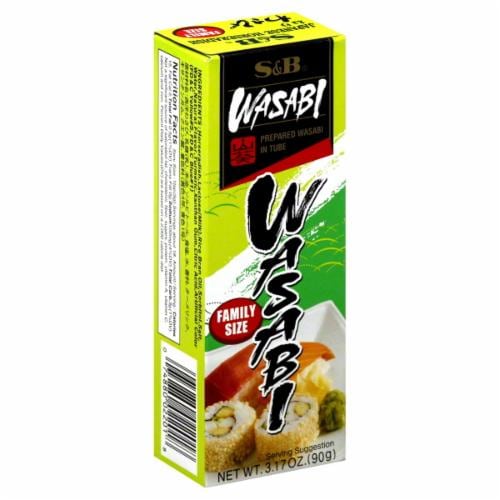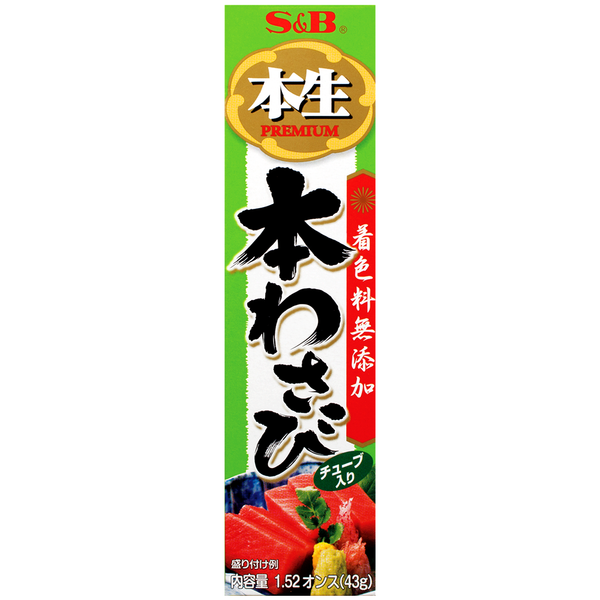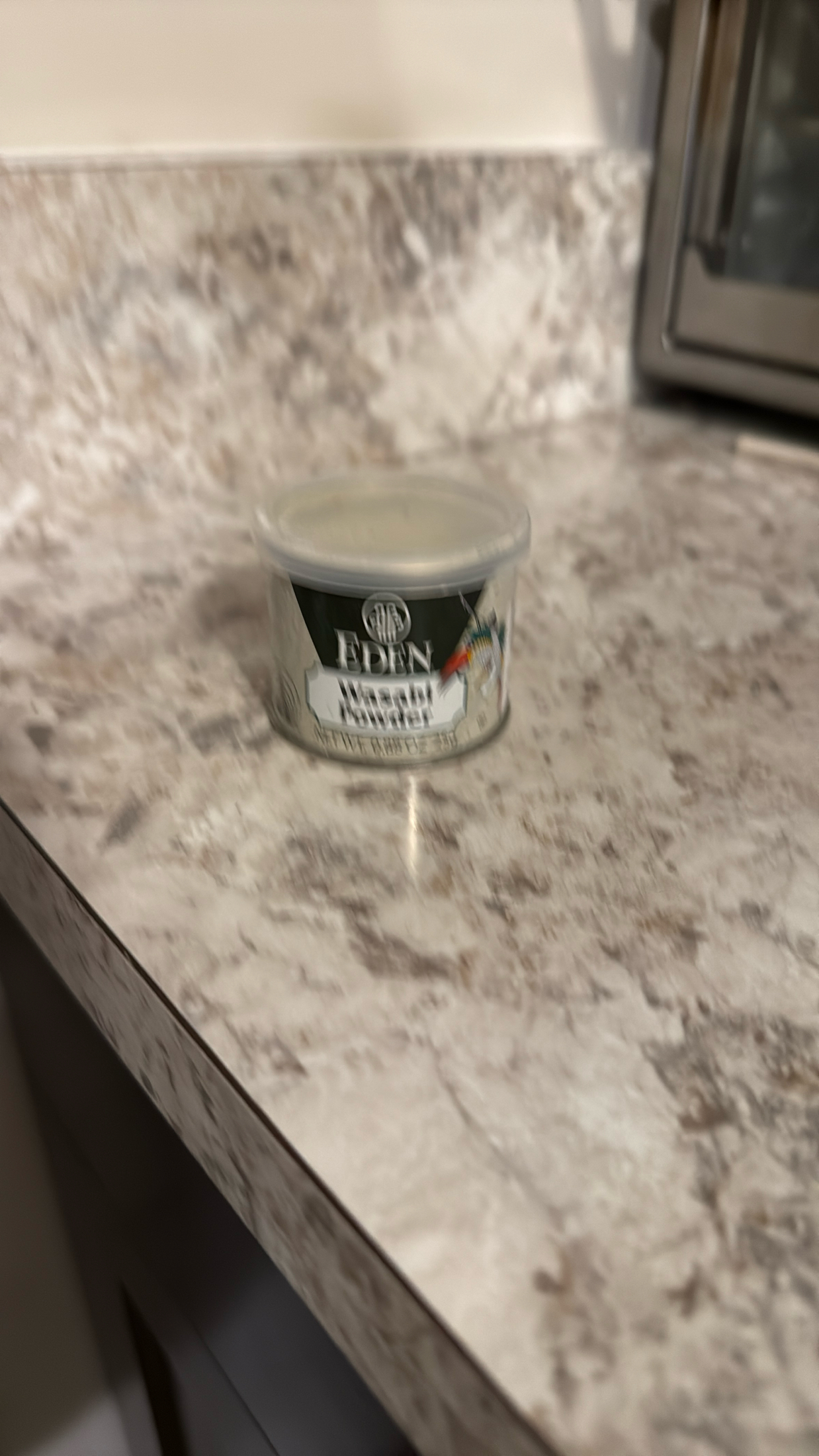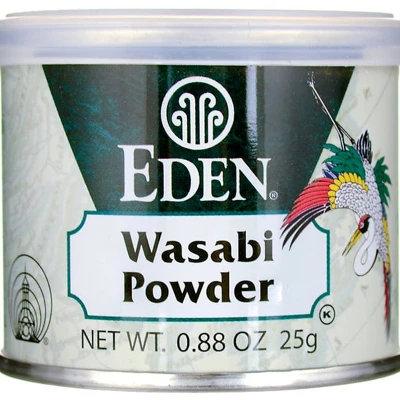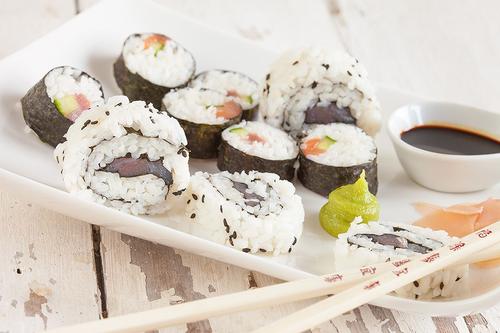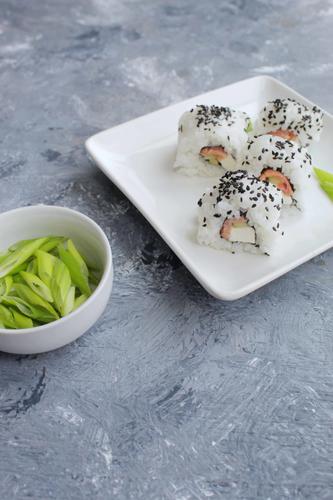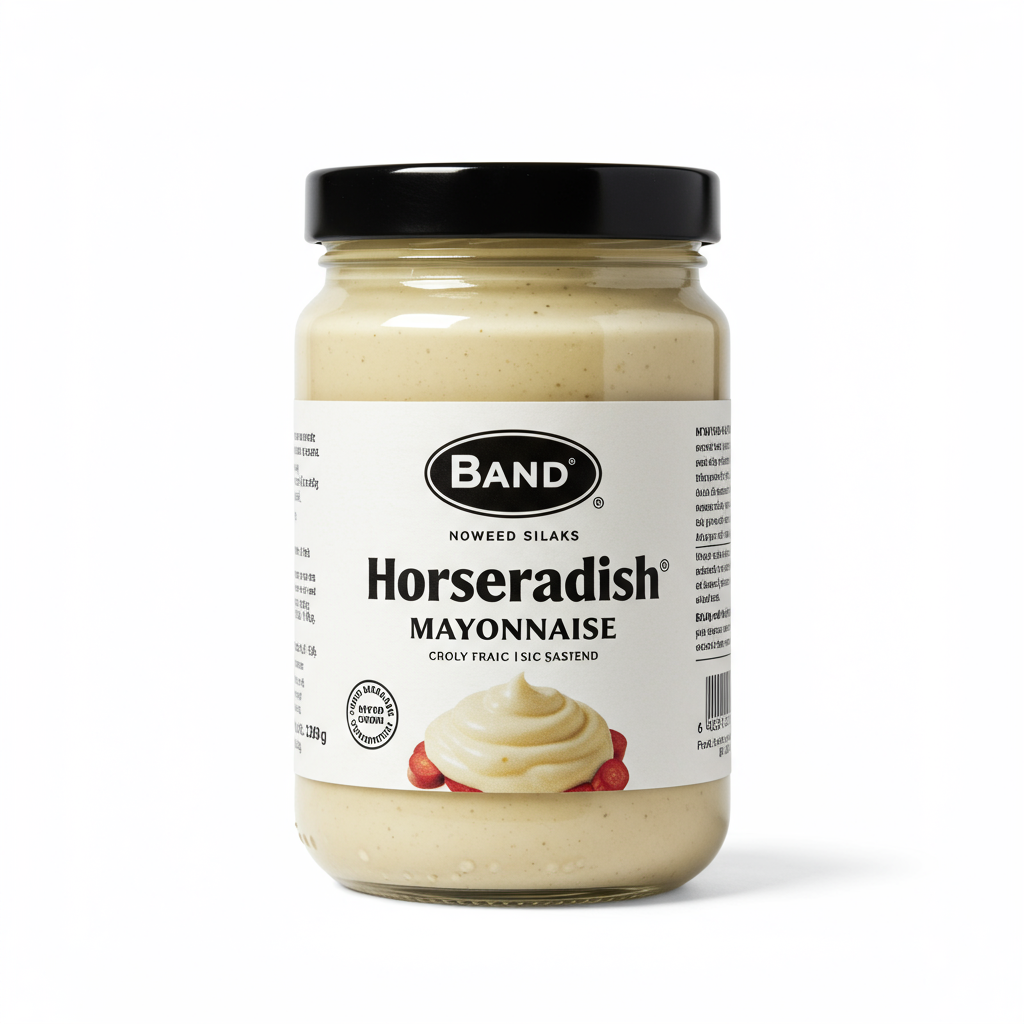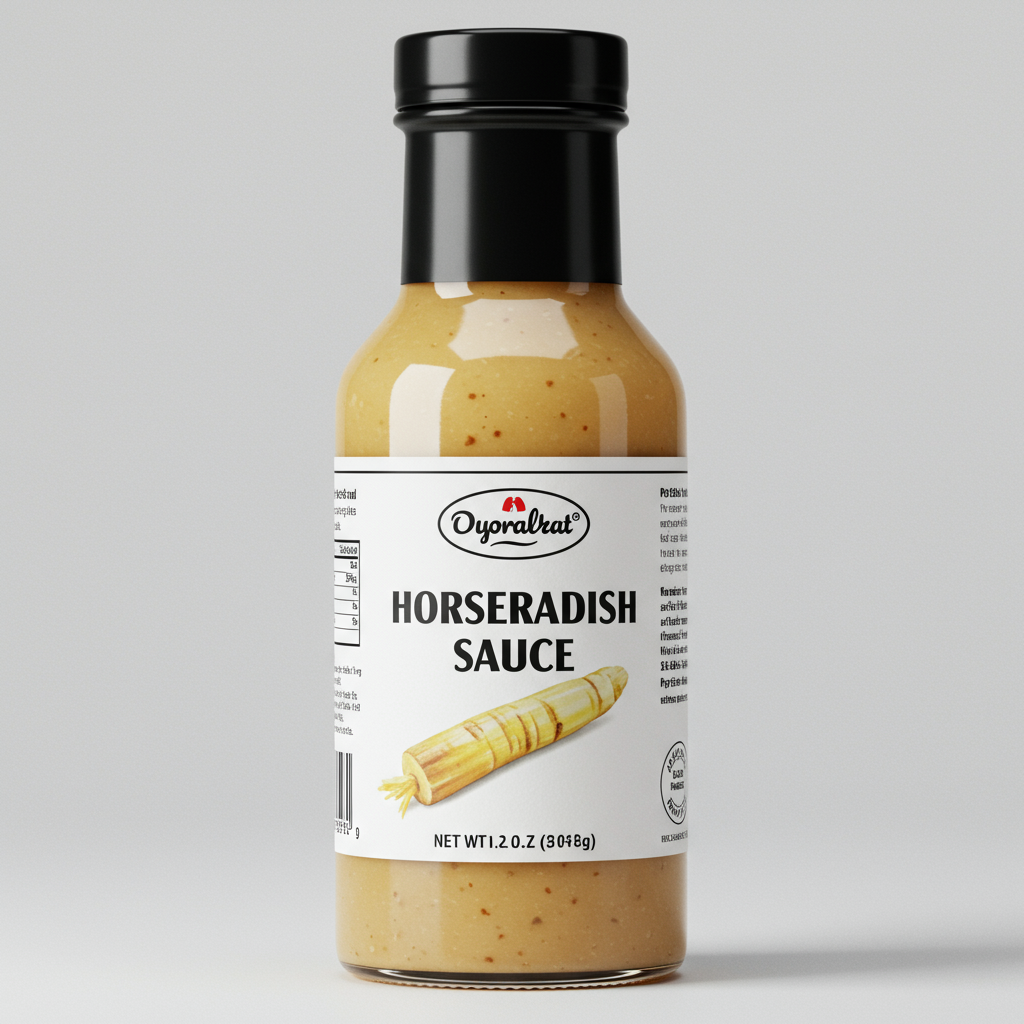CONDIMENTS AND SAUCES
Wasabi
Wasabi, a pungent green paste typically associated with Japanese cuisine, is derived from the rhizomes of the Wasabia japonica plant. It imparts a unique, sharp flavor and heat that quickly dissipates, leaving behind a sweet, slightly herbal taste. The plant is native to Japan and grows primarily in shaded, cool areas near mountain streams.
In home cooking, wasabi is commonly used as a condiment alongside sushi and sashimi, as well as to add some zing to various seafood dishes and sauces. It can also be incorporated into recipes to lend its distinctly potent flavor to dressings, marinades, and other dishes requiring a burst of heat.
78%
CARBS
18%
FAT
4%
PROTEIN
357 Wasabi Products
S&B Wasabi, Gluten Free
Culinary Collaborations Sushi Wasabi
S & B Family Size Wasabi Prepared In Tube
S&B Premium Wasabi Paste in Tube, 1.52 Ounce
Muso Wasabi Paste
Wasabi Powder
Hime, Powdered Sushi Wasabi
Eden Wasabi Powder, With Real Japanese Horseradish, Traditionally Made in Japan
S&B Wasabi Japanese Horseradish
Sushi Sonic Powder Real Wasabi - Case of
Used In 7 Recipes
Wasabi Is Frequently Used With
Wasabi FAQ
The use of wasabi can be a game-changer in many dishes when properly handled and incorporated. Often, people are wary of its distinct heat but it's easy to counterbalance this by using it sparingly. The most common questions around cooking with wasabi often revolve around its flavor pairing and how much to use in cooking. Another common error is substituting wasabi with horseradish, while they have similar tastes, they aren't the same. To get the most out of wasabi, always add it towards the end of the cooking process so that the heat and flavor do not dissipate too much. A little-known tip is that wasabi can make an interesting addition to your desserts like wasabi ice cream or chocolate truffles.
Is there a limit to how much wasabi I can eat?
Can I use wasabi in non-Japanese dishes?
Can I substitute wasabi with horseradish?
How do I mellow out wasabi's heat?
Can wasabi go into the dish while cooking?
Can I add wasabi to sweet dishes?
Does wasabi have any health benefits?
What is the best way to use wasabi in cooking?
Why do people say that wasabi burns the nose, not the tongue?
Which dishes complement wasabi the best?
Expiration & Storage Tips
When does wasabi expire?
Wasabi is usually bought in ready-to-use tubes and can last for about 15 months unopened if stored in a cool and dry place. Once opened, it should stay fresh for up to three weeks in the refrigerator, when resealed and stored correctly. The shelf-life of wasabi paste doesn't drastically change if frozen, but keeping it in the freezer can extend its quality for up to 6 months.
How do you tell if wasabi is bad?
Wasabi that has gone bad will develop a dull color and lose its pungent aroma. It may also become dry and hard, making it difficult to squeeze out of the tube. Using your senses is the best way to determine its quality. If the wasabi has an off smell, taste, or appearance, it's best to throw it out to avoid any potential food-borne illnesses.
Tips for storing wasabi to extend shelf life
• Always seal the tube after use to prevent the wasabi from drying out.
• Store your wasabi in the crisper drawer in your fridge to maintain its freshness for longer.
• If using powdered wasabi, mix only as much as you'll use in one sitting. Powdered wasabi once mixed with water loses its taste quite quickly.
• Freezing your wasabi tube can slightly extend its life, but it can affect the texture and taste.
• Keep wasabi away from direct light and heat, as these can degrade its flavor.
EXPIRES WITHIN
3 - 5
MONTHS
Health Info
Macros
2g
CARBS
0g
FAT
0g
PROTEIN
Allowed on these diets
LOW FAT
HIGH CALCIUM
VEGETARIAN
KETO
PALEO
WHOLE 30
MEDITERRANEAN
LOW CARB
VEGAN
LACTOSE FREE
GLUTEN FREE

